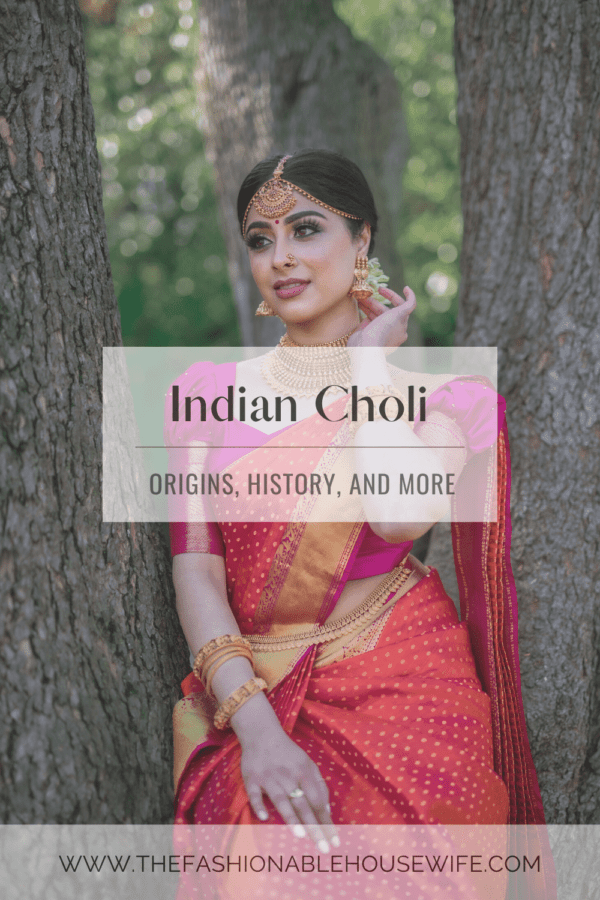
The clothing we wear is part of our family history. The items we wear and pass down to our children and grandchildren tell a story. Wearing certain articles of clothing for specific occasions becomes tradition and a way to celebrate and remember our heritage.
A well known article of clothing tied to Indian culture is the lehenga choli. It is a garment rich in tradition and rooted deeply in Indian history. It is also an article of clothing that has evolved and thrived in modern times, while still maintaining its authenticity.
Lehenga Choli
Lehenga and Choli are two parts of one attire. The lehenga is the skirt, or lower part, while the choli is the blouse or upper part. The skirt is worn at the waist with a bare midriff, with the dupatta (long scarf) usually covering the head or hanging off the shoulder.
The choli can be made from multiple fabrics including silk, cotton, or chiffon, which can make them a little difficult to clean. They are usually embroidered or have colorful prints or embellishments.
The lehenga choli is likely the most widely known piece of Indian attire by outside cultures due to its beautiful and elaborate design and colors. The Lehenga Choli is traditionally worn as bridal attire in the urban parts of India.
However, women do wear lehenga choli to normal parties and festivities in which case the design would vary. It would be less embellished for a non-bridal occasion and can be worn by all age groups and attendees (not just the guest of honor).
When worn by younger women, the skirt may be worn with a halter-neck top or backless choli. It will likely be more colorful and customized to the individual tastes of the wearer.
Origin
Evidence of cholis being worn can even be found in several stone sculptures dated back to 1 A.D. during the Gupta Empire. They were also worn throughout the Mughal reign as well.
The first cholis were made from cotton. These groups began tailoring choli from rich textiles such as silk and brocade, which made the garments desirable for special occasions like weddings. The traditional bridal color was red, and usually heavily embroidered with golden thread of zari. The practice of applying embroidery was developed between the 19th and 20th centuries.
The garment requires such intricate stitching that it usually takes about 20 days to complete. If they are hand-stitched or woven, the turnaround is much longer. There are actually communities that devote themselves to the creation of cholis, each assigned to their own specific task as part of the process.
History
The history of the choli is primarily centered around Indian brides, they have remained a classic style over the centuries due to their versatility and cut which flatters any woman’s body type.
The versions of bridal dress are the most embellished, and often the heaviest. It is not uncommon for the bride’s dress to weigh about 10 kilograms (approximately 20 pounds). It is also the time when the choli worn is the most unique, as it will be designed specifically to fit the style, body type, and personality of the bride who wears it.
The style of a choli will also vary depending upon the location of the ceremony, family, and bride herself. Fashion choices for brides who find themselves outside of South India, may be slim. Things can also get complicated when attempting to adhere to local traditions where you are living (such as the United States), and if the groom is not Indian.
During the freedom struggle in India (1857 to 1947), the choli experienced a dip in popularity. Women chose the saree (long robe arranged to cover the body) as their new uniform. In the late 1980s, Lehenga cholis were spotted among celebrities and restarted their popularity which has continued to this day.
Beyond
The versatility of the choli is one of the reasons why it is still popular among even the newest of generations. If you are a fan of the reality show, Love is Blind, you may have even seen an Indian lehenga choli featured go viral on several social media outlets.
High-budget Bollywood films also showcased the beauty of lehenga cholis in the 90s, sparking an entire host of designers to begin anew. Today, the choli has been given a contemporary update by some top designers like Manish Malhotra and Anita Dongre. Incorporating a touch of influence from the West, new-age silhouettes with urban motifs and styles, the choli had embraced a whole new level of style and appeal.
Its classic design provides the perfect foundation for experimentation and expression, without losing the originality of the garment itself. The choli is a garment that moves with the times still deeply rooted in tradition.




